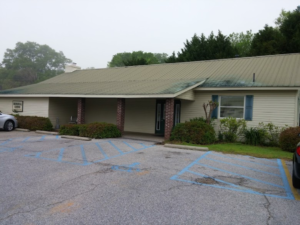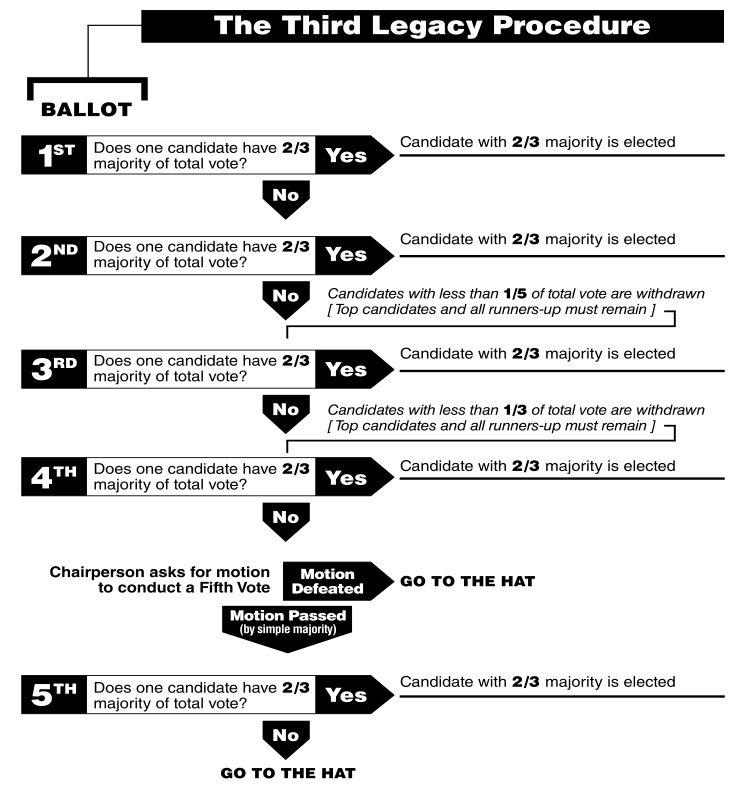
Memorial Center Building
Memorial Center Building
3170 Park Circle, Millbrook AL 36054
The Primary Purpose Group meets every Monday, Wednesday and Friday at 6:00 pm for open discussion meetings. All meetings are non-smoking.
In keeping with our tradition of anonymity at the public level, full names and personal email addresses are never used on our District website. Each committee chair is set up with an email address committeename@centralalaa.org (e.g., cpc@centralalaa.org). We then set up a blind email forward through our hosting company. Emails can be delivered to your regular email address, or can be accessed as webmail on our host’s website.
To request a District 8 email account for district work, contact the webservant.
Dear Friend in the Professional Community:
This letter comes to you from Alcoholics Anonymous, not as a request for anything, but as an offer of A.A. services through you to your patients, clients, students, congregation members or any other person who may have an alcohol problem with whom you come in contact through your work. Because of your involvement, you are in a unique position to have contact with what we call the “still-suffering alcoholic.”
The purpose of our A.A. Committee for Cooperation with the Professional Community is to be “friendly with our friends” in all walks of life, so that the A.A. message of personal recovery can reach more of those who need and desire our help.
Simply stated, Alcoholics Anonymous is a worldwide fellowship of more than two million men and women who help each other maintain sobriety and who offer to share their recovery experience with others. Anyone who thinks he or she has a drinking problem is welcome at an A.A. meeting.
Much more information about A.A. is available in A.A. literature. In addition, there are many resources available on this site, as well as at http://www.aa.org, the official website of Alcoholics Anonymous in the United States and Canada.
You can also contact our CPC Committee by email. We would be happy to speak with you or to your organization about the program of Alcoholics Anonymous and how we work to help alcoholics, to accompany you or members of your organization to an Open Meeting* of Alcoholics Anonymous, or to provide you with additional A.A. literature, including A.A. meeting information you may provide to any potential alcoholic you might come in contact with.
We welcome the opportunity to speak with you and, if possible, work with you to reach alcoholics who might benefit from our program of recovery.
Sincerely,
CPC Committee,
District 8, Area 1
Alcoholics Anonymous
Many of us were sent to our first A.A. meetings by judges, employers, counselors, or some other authority as a result of being arrested for drunken driving, family disputes, or some other problem involving alcohol. If you’ve come to A.A. at the direction (or suggestion) of someone else, you probably have some questions.
Alcoholics Anonymous is a fellowship of men and women who share their experience, strength and hope with each other that they may solve their common problem and help others to recover from alcoholism.
The only requirement for membership is a desire to stop drinking. There are no dues or fees for AA membership; we are self-supporting through our own contributions. A.A. is not allied with any sect, denomination, politics, organization or institution; does not wish to engage in any controversy; neither endorses nor opposes any causes. Our primary purpose is to stay sober and help other alcoholics to achieve sobriety.
Copyright ©The A.A. Grapevine, Inc.
Reprinted with permission.
Millions of people have found recovery through A.A., including many who were sent by professionals. There are A.A. meetings in virtually every country in the world, from Australia to Zambia. While some who are sent to A.A. attend only the required meetings and never come back, others keep coming back because they find that A.A. helps them live life without alcohol.
Being “sent” to A.A. does not make you an alcoholic. People may point out indications that you have a drinking problem — loss of control, driving under the influence, arrests, lost jobs, broken marriages or relationships, blackouts, the shakes, etc. Only you can decide that you are an alcoholic. If you think that you are an alcoholic then we encourage you to keep coming back.
There are links to pamphlets in the sidebar to the right. The answers to many of the questions you might have may be found in them. Please take a moment to read some of them. Many of the links are directly to the literature area of the www.AA.org website. You can find other pamphlets and information on that site.
No matter how carefully we design our service structure of principles and relationships, no matter how well we apportion authority and responsibility, the operating results of our structure can be no better than the personal performance of those who must man it and make it work. Good leadership cannot function well in a poorly designed structure. But weak leadership can hardly function at all, even in the best of structures. But once we have created a basically sound structure, that job is finished, except for occasional refinements.
With leadership we shall have a continuous problem. Good leadership can be here today and gone tomorrow. Furnishing our service structure with able and willing workers has to be a continuous activity. It is therefore a problem that in its very nature cannot be permanently solved. We must continuously find the right people for our many service tasks. Since our future effectiveness must thus depend upon ever-new generations of leaders, it seems desirable that we now proceed to define what a good service leader should be; that we carefully indicate in each level of service, especially in our Board of Trustees, what special skills will always be required; and that we review our present methods of finding and choosing that leadership.
“A.A. Service Manual Combined With Twelve Concepts for World Service, 2015-2016 Edition,” p. 34. A.A.W.S. All rights reserved.
It’s election time in Area 1 and, therefore, in District 8. As members of the “odd” panels, we hold our elections every two years, and those panels of trusted servants serve in the odd, then in the even year. Groups may hold elections for group servants at different intervals, but we encourage positions of general service (General Service Representatives (GSR) and Alternates (AGSR), District Committee Members (DCM) and their alternates (ADCM), along with those members who chair subcommittees of the District (Corrections, PI, CPC, etc.) be elected to serve concurrently with our Area Officers (Delegate, Alternate Delegate, Chairman, Treasurer, Secretary and Registrar) and Area committee chairs.
For information on the upcoming election assembly at Area 1, CLICK HERE to visit the Area 1 page of our website.
District 8 elections will be held during the regular District meeting October 1, 2016. In keeping with our informed group conscience at the district meeting, we will use the Third Legacy Procedure to elect a new DCM and ADCM. We will then use majority vote to elect a District Secretary, and to fill the chair position of our service committees. To understand the responsibilities and suggested experience needed to serve in any of these positions, consult the A.A. Service Manual, available HERE.
A.A.’s Third Legacy Procedure is a special type of electoral procedure, used primarily for the election of delegates and regional and at-large trustees. It is considered to be unique to A.A., and at first glance, appears to introduce a strong element of chance into a matter that should depend solely on the judgment of the majority. In practice, however, it has proved highly successful in eliminating the influence of factions or parties that seem to thrive on most political scenes. The railroading of a candidate for election is made difficult, if not impossible, since voters have a wide selection of candidates to choose from. More importantly, a second-place candidate who may be extremely well qualified but without early popular support is encouraged to stay in the balloting rather than withdraw.

Below are links to download (pdf format) job descriptions for Area 1 Officers. These descriptions have been compiled by the Structures and Procedures Committee, and approved by vote of the Area Assembly. For further information on service positions at the Area level, and all levels throughout A.A.’s Service Structure, please see the latest edition of “The A.A. Service Manual Combined with the Twelve Concepts for World Service,” available at www.AA.org.
As these are updated, the files will be replaced.
The Website Committee, a standing committee of District 8, focuses on helping carry A.A.’s message through the internet to members and future members of Alcoholics Anonymous, professionals who may be willing to cooperate with us, and the general public.
You don’t need to have any experience or expertise in websites or computers — just an honest desire to help carry the message through this information channel. We’re always looking for members with opinions, ideas, and enthusiasm. If you believe decisions in A.A. should be based on an informed group conscience rather than the well-meaning ideas and designs of an individual, PLEASE encourage participation in this committee.
The purpose of a corrections committee is to coordinate the work of individual A.A. members and groups who are interested in carrying our message of recovery to alcoholics behind the walls, and to set up means of smoothing the way from the facility to the larger A.A. community through prerelease contacts.
A corrections committee may function within the structure of a General Service Conference area committee or an intergroup/central office. In A.A.’s early years, prison Twelfth Step work was usually done by an individual group or an individual member. As A.A. has grown, however, it seems that a committee formed within the A.A. service structure works more effectively.
The Grapevine Committee serves the A.A. fellowship in District 8 by making sure information about Grapevine and La Viña is available to them and to the groups. They also perform a service for Grapevine, linking the magazine to members of the Fellowship who otherwise might not read it or even know that A.A. has a journal at all.
The Grapevine Committee is engaged in practical, hands-on work. Their basic job is to make Grapevine information and the magazine available to the groups, and to encourage A.A.s to read it, subscribe to it, write for it, and use it in Twelfth Step work.